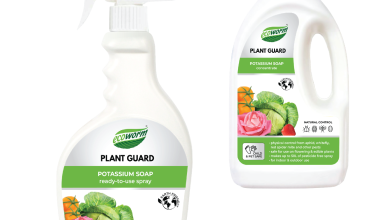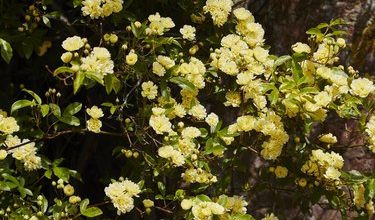Types of caterpillars on garden plants and how to eliminate them
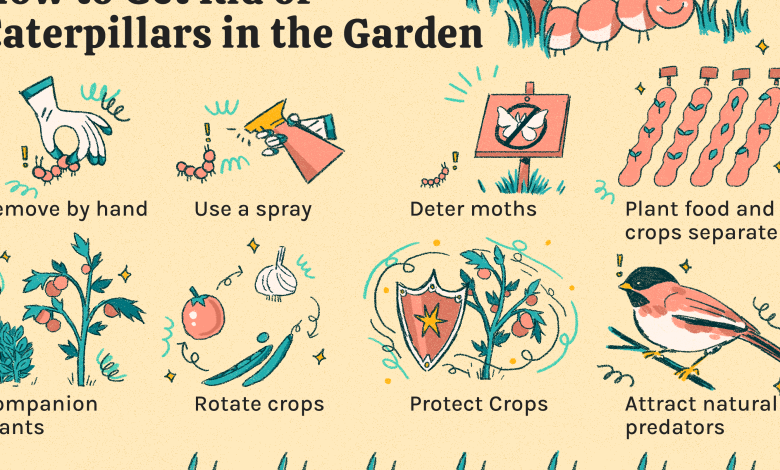
Hello farmers! In today’s article I am going to talk to you about the different types of caterpillars that we can find in the garden. In addition, I will give you some tips to help you identify and control them.
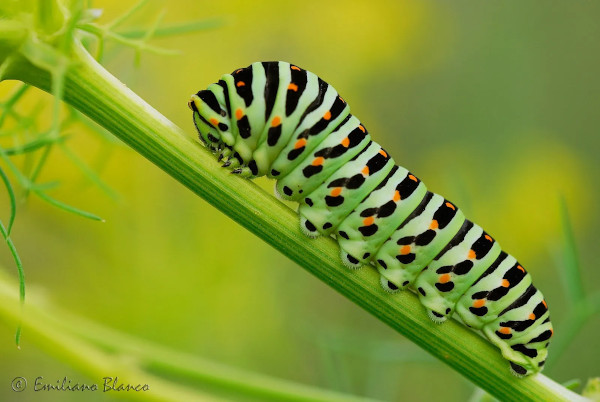
What are caterpillars?
The larvae of the Lepidoptera family (butterflies and moths) are known by the term caterpillar. The caterpillars are born from the eggs (they are usually yellow and elongated), then they will go through their pupa or chrysalis stage. And eventually they will turn into butterflies or moths.
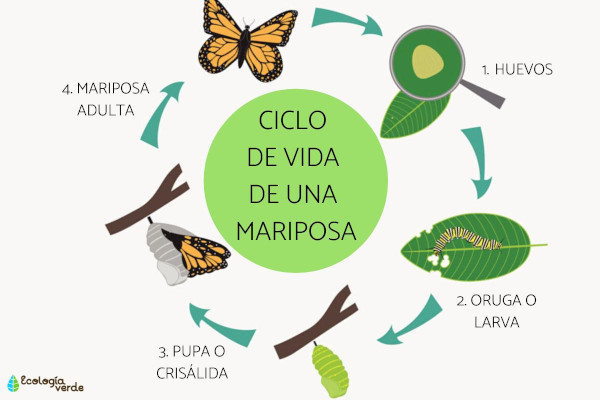
However, we must not confuse them with the larvae of hymenoptera (symphytes), known as false caterpillars. To differentiate one from the other, we simply have to note that Lepidoptera larvae have 1-5 pairs of false legs (abdominal legs) and those of Hymenoptera have 6-8 pairs. There is another type of legless larvae (legless) called miners because they live inside the leaf tissue, causing damage to plants. The caterpillar-shaped larvae are known as eruciforms.

Caterpillar Characteristics
- Integument slightly hardened.
- Head with cephalic capsule.
- Strong jaws (they are chewers).
- They have stems.
- Silk-producing glands, located in the lip.
- They may have stinging hairs.
- solitary or gregarious
- monophagous and polyphagous
- Some species can blend in with the environment to defend themselves.
Where are caterpillars found?: Main species
Next, I present to you the most important caterpillar species.
Apple woodworm (Cydia pomonella)
2-3 generations/year.
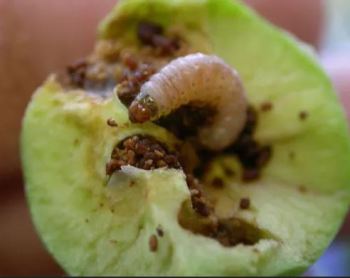
One of the most important pests of the apple tree. It spends the winter as a caterpillar developed in the grooves of the trunk and on tree branches. The caterpillars can excavate galleries inside the fruit. If conditions are favourable, they transform into pupae and later into adults. The optimal conditions for mating are sunsets, temperatures greater than 15ºC and relative humidity greater than 60%. During the day, the adults are motionless in the trees.
The main control methods are based on: placement of bait bands, removal of attacked fruits, flight tracking, monitoring of eggs, sexual confusion, and others. Some predators of these species are birds of the genus Picus or bats.
Tomato moth (Tuta Absoluta)
10-12 generations/year.
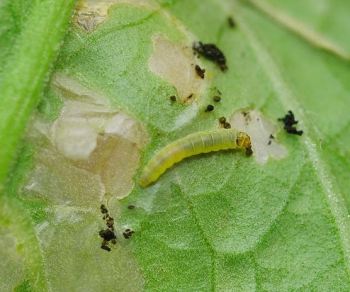
It is the most important tomato pest. It can affect other species such as potatoes, aubergines or peppers. The eggs are located on the underside of the leaves. They are usually deposited individually. The caterpillars cause damage to the leaves, stems and fruits.
Control methods are mainly based on: removing damaged parts, removing crop debris and we can use water traps baited with pheromones to keep pest levels low. The main predators of this species are the Miridae family (macholophus and nesidiocoris) and the Trichogrammatidae family. Finally, we can use refuge plants such as fly grass and olive grove.
Cabbage caterpillar (Pieris brassicae)
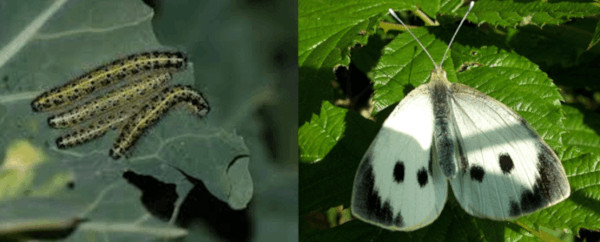
It causes damage to cabbage, causing it to rot. Its adult form is characterized by having two points on the wings, like the ones seen in the image.
Lemon flower moth (Prays citri)
Many generations/year.
The larvae are whitish or greenish with a brown head. They cause damage mainly to the floral organs and young fruits. The caterpillar penetrates inside, feeds on the anthers and the pistil and prevents the fruits from forming.
The main natural enemies of this species are: Crysoperla and Aelothrips.
Nocturnal caterpillars: Family Noctuidae
Spodoptera exigua
It mainly affects pepper, watermelon and beet. The caterpillars are light green in the solitary phase and dark green in the gregarious phase.
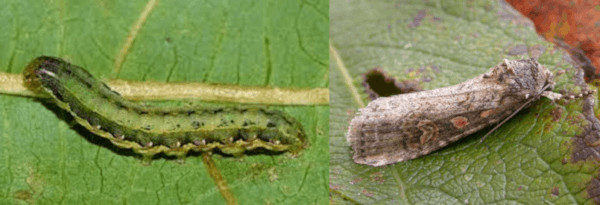
Helicoverpa armigera (Tomato caterpillar)
Although it mainly affects tomatoes, they like to lay their eggs on corn. For this reason, maize is sometimes used as a trap plant. Causes damage to flowers and fruits. The caterpillars are small, light-colored, with white lines on the sides.
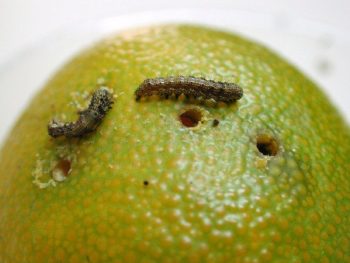
Thaumetopoea pytiocampa (The Processionary Caterpillar)
The name is due to the way the caterpillar moves (one after the other), looking for a place to pupate. It affects the pines. The female surrounds two needles and lays by wrapping them. Later, she covers them with golden scales from her abdomen. The main damages are defoliations produced by the feeding of the larvae. Finally, for its control, pheromone traps, Bacillus thuringiensis or insectivorous bird nests are used.
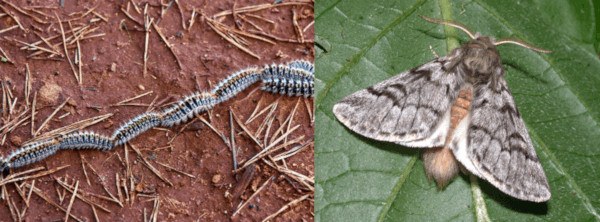
References
- Arnó, J., Sheep, M., Gabarra, R. (2018).Selection of flowering plants to enhance the biological control of Tuta Absoluta using parasitoids. Biological Control,122, 41-50.
- Vega, J., Vega, J.M., Moneo, I. (2011). Cutaneous manifestations caused by the pine processionary caterpillar (Thaumetopoea pityocampa), Actas Dermo-Sifiliografías,102 (9), 658-667.
- Mangan A, Piaggio A, Hopken M, Werner S, Pejchar L (2018). A molecular analysis to assess codling moth Cydia pomonella L. (Lepidoptera: Tortricidae) predation by orchard birds, Ecological Indicators, 93, 1222-1225.
I hope you liked the article and, as always, you can tell us about your experiences with this type of caterpillar in the comments.
Have a nice day!

